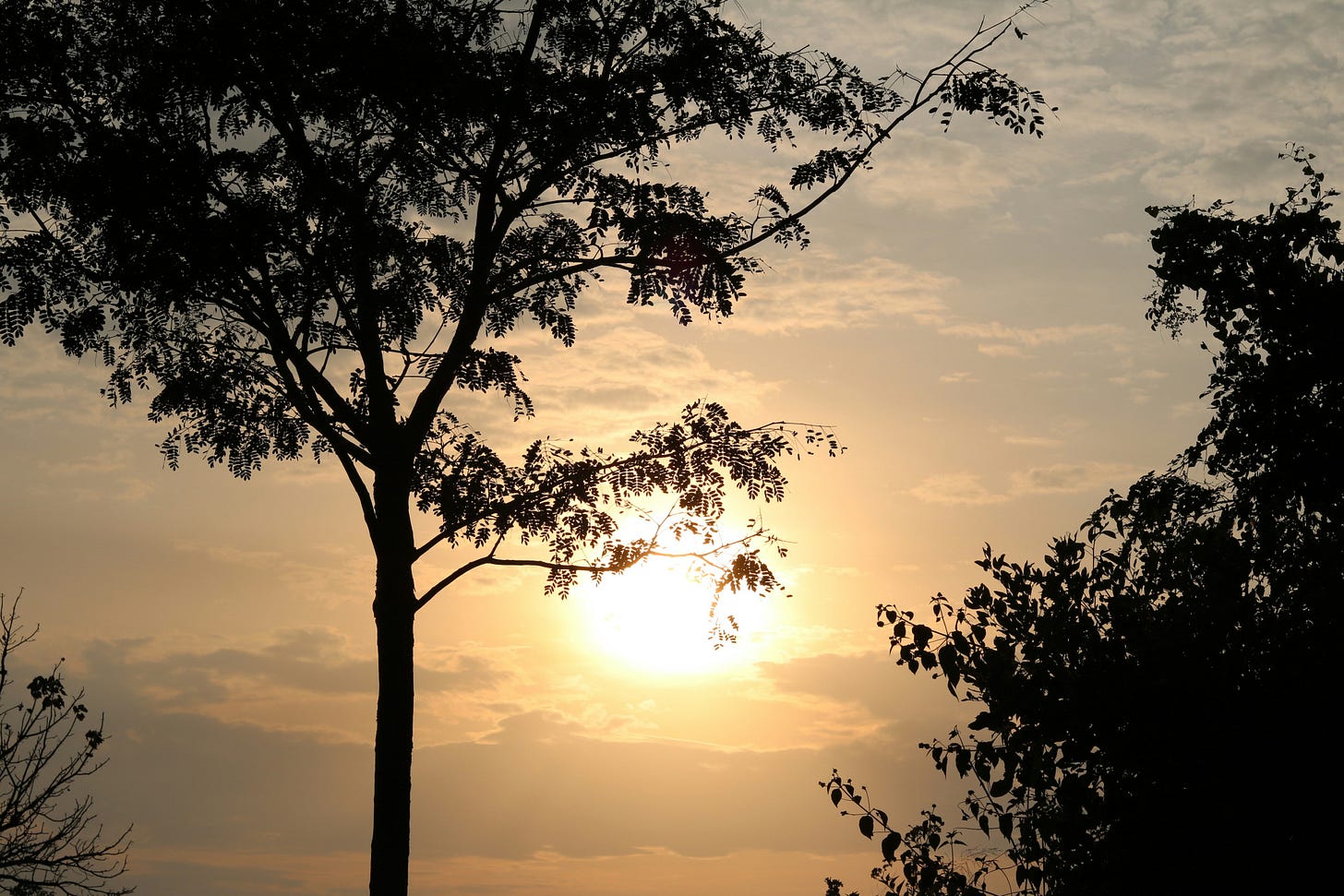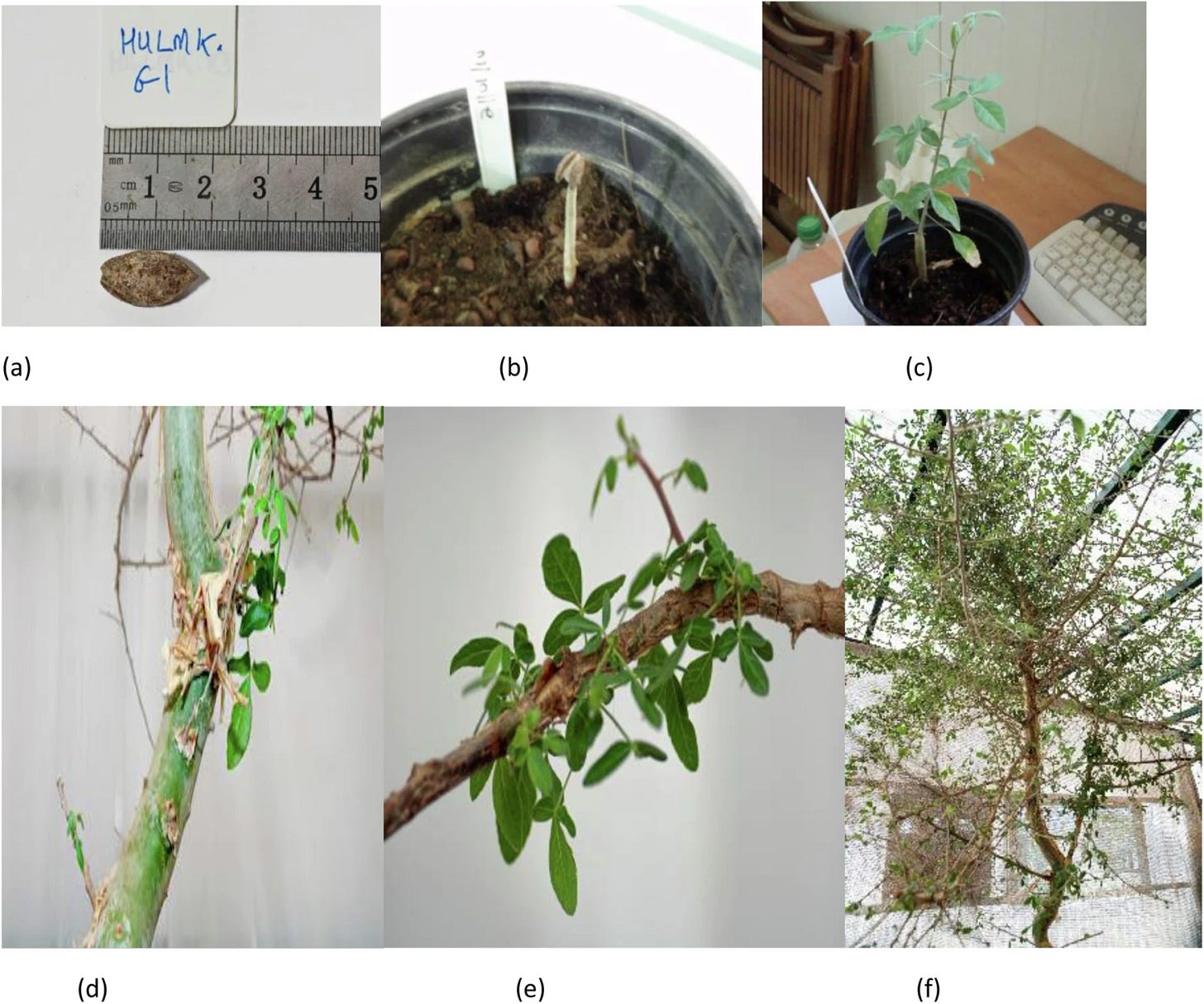Thursday Things is here! This week we break rocks and plant seeds for Science!
We’ll never solve all the mysteries. But we’ll also never stop trying. Photo by Emilie on Unsplash
If you enjoy this edition, please click the heart icon in the header or at the end of the post to let me know.
Science never learns
Me: Oh, hey, scientists! What have you got there?
Scientists: It’s a 2 billion-year-old rock with microbes inside!
Me: And what do we do when we find a 2 billion-year-old rock with microbes inside?
Scientists: We crack it open and let the microbes out!
Me: That’s right. We leave it alone and — what?!? No! Put down the rock!
Sigh.
Microbes Found Alive Sealed in Rock For 2 Billion Years
What makes these organisms incredibly special is that they have been cut off for billions of years – far longer than any other community of subterranean microbes we've ever seen. This find of living microbes in 2 billion-year-old rock absolutely smashes the previous record of 100 million years.
"So this is a very exciting discovery," says geomicrobiologist Yohey Suzuki of the University of Tokyo.
You know what else was exciting? The Andromeda Strain.
And it's a significant one: microbes in isolated underground pockets like these tend to evolve more slowly, since they're detached from many of the pressures that drive evolution in more populated habitats.
This means that the microbe community can tell us things we might not have known about microbe evolution here on Earth. But it also suggests that there might be underground microbe communities still alive on Mars, surviving long after the water on the surface dried out.
At least those rocks are safely on Mars. The only thing worse than releasing 2 billion-year-old microbes is releasing 2 billion-year-old microbes from Mars.
"NASA's Mars rover Perseverance is currently due to bring back rocks that are a similar age to those we used in this study. Finding microbial life in samples from Earth from 2 billion years ago and being able to accurately confirm their authenticity makes me excited for what we might be able to now find in samples from Mars."
Oh, come on!
"We didn't know if 2-billion-year-old rocks were habitable," explains Suzuki.
Well crack that puppy open and let’s find out! What could go wrong?
"By studying the DNA and genomes of microbes like these, we may be able to understand the evolution of very early life on Earth."
Very early life on Earth probably wasn’t very friendly.
Put down the rock hammer, go to your room, and read At the Mountains of Madness again.
Get all the science details here: Subsurface Microbial Colonization at Mineral-Filled Veins in 2-Billion-Year-Old Mafic Rock from the Bushveld Igneous Complex, South Africa
Science never learns - part 2
Me: Oh, hey, scientists! What have you got there?
Scientists: It’s a 1000-year-old seed we found in a cave in the Judean desert!
Me: And what do we do when we find a 1000-year-old seed in a cave in the Judean desert?
Scientists: We plant it and see what happens!
Me: …
Scientists: Mystery tree!
Why do I even bother?
Scientists grow mystery tree from 1,000-year-old seed
“Jurassic Park,” and its genetically modified dinosaur escapees, is pure science fiction — it’s never going to happen. But it doesn’t mean that scientists aren’t interested in bringing the past back to life in some form.
They’re just looking for problems to cause.
Researchers are also mining ancient DNA for a potential source of new molecular-based drugs. Still others are reviving historical plants to study their evolution and genetic diversity, which could one day help humans benefit from long-lost species with medicinal properties.
Mining ancient DNA? Sounds harmless enough. Let’s get to the mystery tree.
In the 1980s, archaeologists unearthed a pristine seed in a cave in the Judean Desert. Decades later, Dr. Sarah Sallon, founder of the Louis L. Borick Natural Medicine Research Center in Jerusalem, formed a different study team that planted it to see what would happen.
Sure, why not?
But how do you know that seed isn’t imprisoning a powerful evil djinn that you may be unleashing on the world?
¯\_(ツ)_/¯
Remarkably, the tree thrived and now stands 10 feet (3 meters) tall, although it has never flowered or produced fruit.
Using DNA sequencing, the researchers identified the mystery tree as part of the Commiphora genus, but its exact species is unknown and likely extinct. The team believes it might have a link to a healing plant mentioned in the Bible.
Oh, it’s a Biblical healing plant? So you got lucky. This time.
Lost biblical plant with medicinal properties resurrected from 1,000-year-old seed
Botanists have grown a long-lost tree species from a 1,000-year-old seed found in a cave in the Judean Desert in the 1980s.
The researchers involved in the project say they believe the tree species, which is thought to be extinct today, could have been the source of a healing balm mentioned in the Bible and other ancient texts.
Interesting …
Sallon said it was possible that the tree could be the source of the biblical “tsori,” a medicinal plant extract associated with the historical region of Gilead north of the Dead Sea in the Jordan Rift Valley, a mountainous and forested area that was intensely cultivated and is now part of Jordan.
The team’s findings, described in a study published September 10 in the journal Communications Biology, unlock some of the secrets surrounding the origins of this enigmatic specimen, which Sallon nicknamed “Sheba.”
And what are Sheba’s secrets?
Based on historical research, Sallon had a hunch that the tree might be the source of what ancient texts from the region, including the Bible, describe as “Judean Balsam” or “Balm of Gilead” — a fragrant resin harvested to make a coveted perfume that was exported around the world at the time.
And is this mystery tree the source for Balm of Gilead? Go read the article to find out!
I’m not giving away all the mysteries here.
Or get the full science facts here: Characterization and analysis of a Commiphora species germinated from an ancient seed suggests a possible connection to a species mentioned in the Bible
Meet Sheba, the mystery tree! Image: via Communications Biology
(a) ancient seed prior to planting (b) developing seed at 5 weeks showing epicotyl and developing cotyledons covered by seed coat (c) seedling (6 months) (d) peeling bark (12 years) (e) leaves showing fine hairs (12 years) (f) mature tree (12 years). Permission for the use of pictures shown in Fig. 1 (a) and (c-f) was provided by Mr Guy Eisner and for Fig. 1 (b) by Dr Elaine Solowey.
Thank you for reading!
Please click the hearts, leave a comment, and use the share feature to send this issue to a friend who might enjoy it. See you next Thursday!




